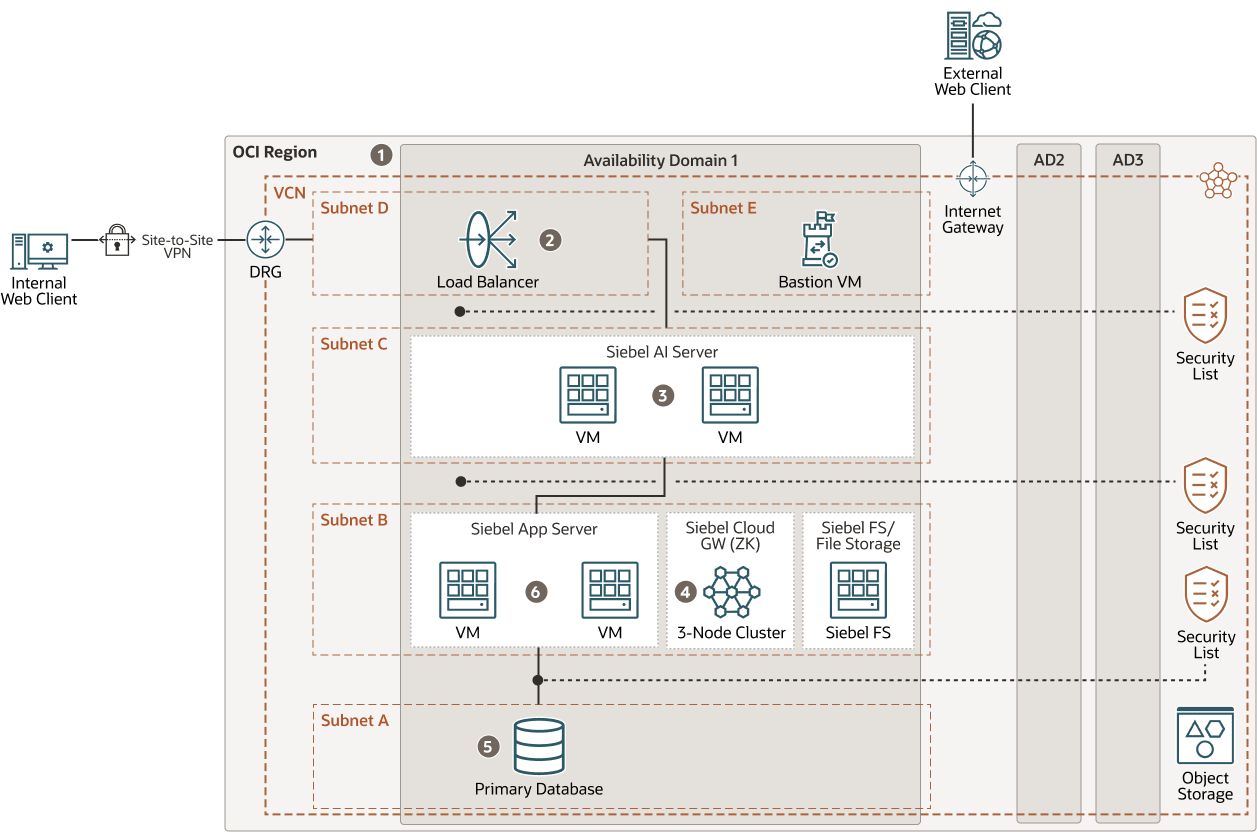Architecture for Deploying Siebel 19.x and above for Resiliency and High Availability
This architecture shows how to deploy Siebel 19.x and above for resiliency and high availability.
At a basic level, you can achieve resiliency and redundancy for your Siebel deployment even within a single availability domain (AD).

Description of the illustration res-ha-siebel-19-20-21.png
- System Resilience (1): Fault domains is a grouping of hardware and infrastructure that is distinct from other fault domains in the same Availability Domain (AD). Each AD has three fault domains. By properly leveraging fault domains you can increase the availability of applications running on Oracle Cloud Infrastructure.
- Load Balancer Tier (2): We recommend having load balancers in their own tier or subnet to load balance traffic to Siebel web servers. The load balancer receives requests from users and routes them to the application tier.
- Active-Active: Siebel AI Server Redundancy in Application Interface Tier (3) Subnet C: This tier contains redundant instances of the Siebel Application Interface (AI) servers to provide high availability. For server redundancy of the AI servers they should be distributed across the fault domains within the AD. All instances are active and receive traffic from the load balancer and middle tier.
- Active-Active: Siebel Server Redundancy in Application Interface Tier (4) Subnet B: This tier contains redundant instances of the Siebel Application servers to provide high availability. For server redundancy of the Siebel servers they should be distributed across the fault domains within the AD. All instances are active.
- Redundancy in Database Tier (5): This tier contains database system instances, Subnet A. For performance requirements, Oracle recommends that you use two-node Oracle RAC (available only in DBaaS VMs) or Exadata Cloud Service
- Backup Strategy – AI tiers and Siebel Application Server tiers: Backup of the AI and application server tiers can done using snapshot of the Virtual Machine (VM). VM can be restored from these snapshots.
- Backup Strategy - Database Tier: Use OCI Object Storage to perform backups using RMAN. To back up/patch the database to OCI Object Storage, the DB system's VCN must be configured with either a service gateway or an Internet Gateway (IGW). We recommend using an IGW for backup and patching.